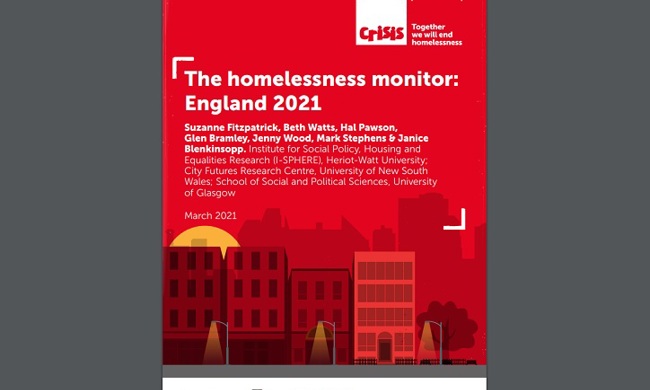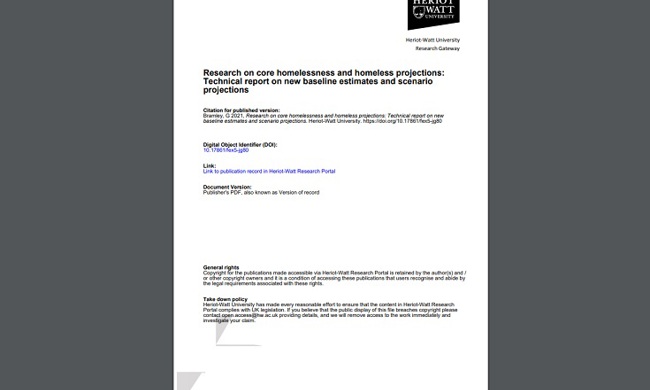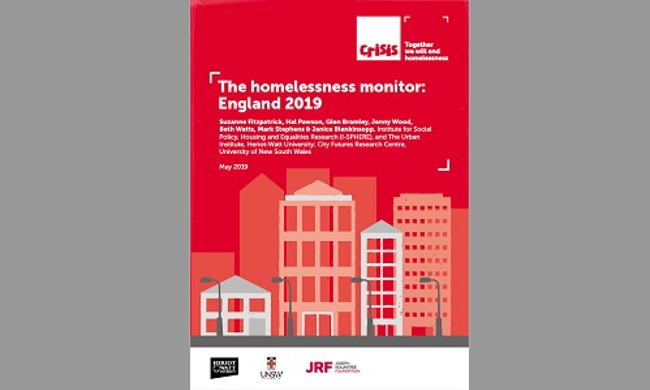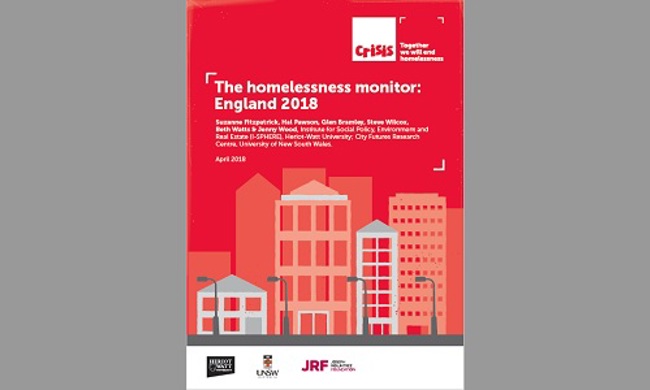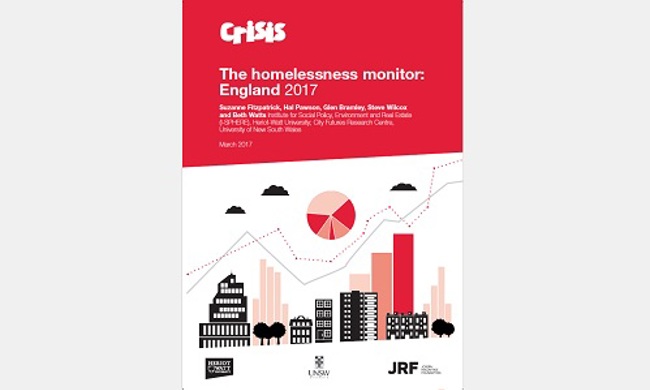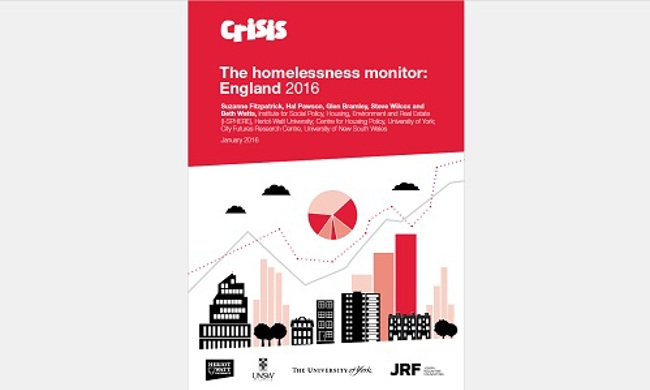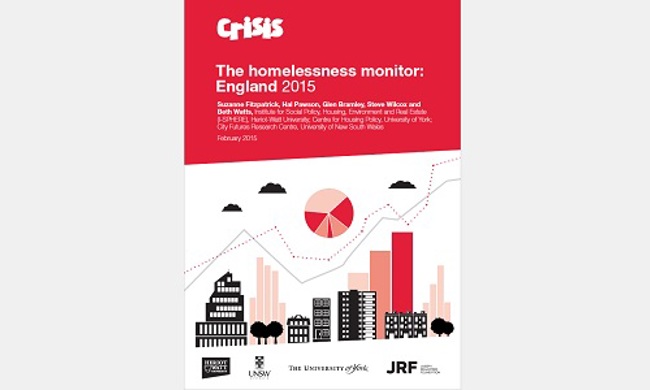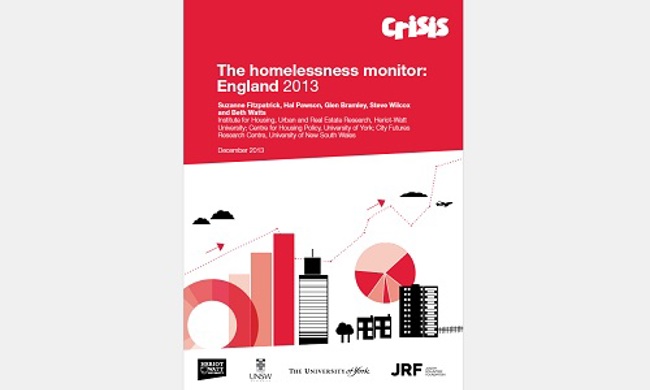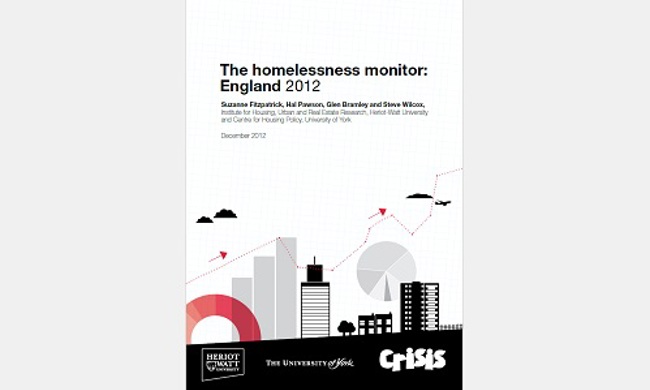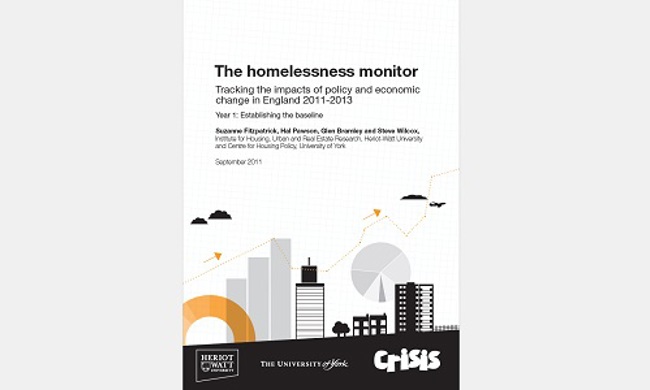The Homelessness Monitor: England 2021
01.03.2021
The Homelessness Monitor: England 2021 is commissioned by Crisis, and is a longitudinal study providing independent analysis of the homelessness impacts of recent economic and policy developments in England. This ninth annual report updates our account of how homelessness stands in England in 2020, or as close to 2020 as data availability allows. It also highlights emerging trends and forecasts some of the likely future changes, identifying the developments likely to have the most significant impacts on homelessness.
Key Findings
- The report covers a year dominated by the twin major events of the COVID-19 pandemic and Brexit. It is also the first Monitor in which a comprehensive analysis of Homelessness Reduction Act processes and outcomes is included and we offer detailed modelling estimates and forward projections of extreme forms of ‘core’ homelessness.
- Thanks to temporary protective measures (especially income protection programmes and eviction moratoria), the COVID-19 pandemic triggered no immediate overall increase in homelessness applications. The number judged as threatened with homelessness fell back significantly between April-June 2020 (down 35 per cent on the previous quarter).
- But temporary accommodation placements surged, particularly of single homeless people, as a result of the emergency measures to protect people at risk of rough sleeping (‘Everyone In’) during the pandemic.
- Local authorities agreed that the combined impact that key policies like raising the Local Housing Allowance (LHA) and suspending evictions have had in preventing homelessness during the pandemic – the suspension of evictions from social and private rented tenancies was identified by 87% of councils as very important in preventing and minimising homelessness.
- But despite this progress, the pandemic has further exposed England’s severe shortage of affordable homes. Access to long-term housing was the capacity challenge most widely seen as having been posed (or emphasised) by the pandemic by local authorities. A majority of councils surveyed said it had become harder to place homeless households in both social rented and private rented sector housing during the pandemic. A pressing priority for many local authorities remains finding effective move on arrangements for people temporarily accommodated during the COVID-19 crisis.
- Post-lockdown, local authorities expect to see an increase in levels of homelessness - 94% said they expect to see an increase in people made homeless after being evicted from the private rented sector and increase in newly unemployed people made homeless by the pandemic.
- ‘Core homelessness’ in England – a concept which captures the most severe and immediate forms of homelessness – is estimated to have totalled nearly 220,000 in 2019, having risen from about 187,000 in 2012. During 2020 these numbers dropped somewhat to around 200,000, mainly due to the effects of the Government’s emergency measures in response to the COVID-19 pandemic. In 2020 there were an estimated 10,500 people currently sleeping rough on any given night which had dropped by a third on the previous year.
- It is predicted that the economic aftermath of COVID-19 risks a substantial rise in core homelessness, including rough sleeping, unless the Government implements a range of housing and welfare mitigation interventions, including continuing with emergency accommodation measures for those at risk of rough sleeping. In the longer term, the largest projected impact on reducing core homelessness would result from a large expansion of total and social housing supply and consistent, large-scale application of Housing First accompanied by appropriate support for mental health and substance misuse issues, and raising of the Local Housing Allowance.
Reference
Fitzpatrick, S., Pawson, H., Bramley, G., Wood, J., Watts, B., Stephens, M. & Blenkinsopp, J. (2021) The Homelessness Monitor: England 2021. London: Crisis.

